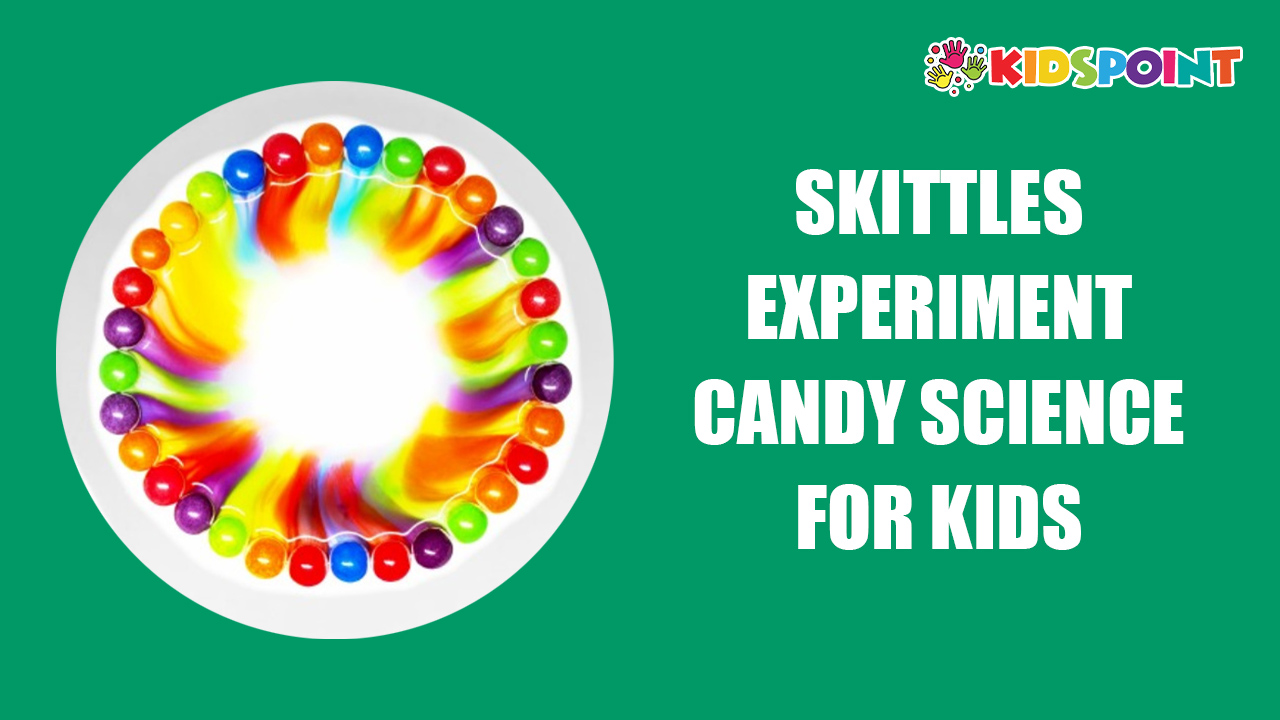Candy science is a deliciously fun way to introduce children to scientific concepts. It engages their curiosity while making learning enjoyable and memorable. At The Kids Point, we believe in the power of hands-on exploration, and one popular candy science experiment that captivates kids’ attention is the Skittles Experiment. Using simple materials and everyone’s favorite rainbow-colored candy, this experiment offers a hands-on experience in observing scientific principles such as diffusion, color mixing, and density.
What You’ll Need
To conduct the Skittles Experiment, gather the following materials:
- A bag of Skittles (preferably the original flavor)
- A shallow plate or dish
- Water
- A timer or clock
- Optional: A camera or smartphone to document the process
The Skittles Experiment Procedure
Follow these steps to conduct the Skittles Experiment:
- Step 1: Prepare your workspace by laying out the shallow plate or dish.
- Step 2: Sort the Skittles by color. You can involve your child in this step, which adds an element of anticipation and excitement.
- Step 3: Arrange the sorted Skittles around the edge of the plate in a circle. You can alternate colors or create any pattern you like.
- Step 4: Carefully pour warm water into the center of the plate, ensuring that it covers the bottom but doesn’t overflow.
- Step 5: Set the timer or clock and observe the Skittles as they interact with the water. Encourage your child to make predictions about what will happen.
- Step 6: Observe and document the changes in the Skittles as they dissolve and the colors spread into the water.
- Step 7: Once the experiment is complete, discuss the observations with your child and explain the scientific principles at play.
The Science Behind the Skittles Experiment
The Skittles Experiment demonstrates several scientific concepts:
- Diffusion: When the warm water comes into contact with the sugar coating of the Skittles, it begins to dissolve the outer layer. As the sugar molecules spread out from areas of high concentration (the Skittles) to areas of low concentration (the surrounding water), diffusion occurs.
- Color Mixing: As the sugar coating dissolves, the colors from the Skittles spread into the water, creating a visually striking display of color mixing. This process illustrates how different colors blend together to form new colors, similar to what happens when mixing paint or light.
- Density: Depending on the amount of sugar coating dissolved and the density of the water, you may observe layers of colored water forming in the plate. This showcases how substances with different densities can separate and form distinct layers.
Educational Value of the Skittles Experiment
The Skittles Experiment offers numerous educational benefits for children:
- Hands-On Learning: Children actively participate in the experiment, engaging their senses and promoting experiential learning.
- Observation and Prediction: Encouraging children to make predictions before and during the experiment fosters critical thinking skills and scientific inquiry.
- Introduction to Scientific Concepts: The experiment introduces children to scientific principles such as diffusion, color mixing, and density in a fun and accessible way.
- Creativity and Exploration: Children can express their creativity by arranging the Skittles in different patterns and observing how it affects the outcome of the experiment.
- Documentation and Analysis: Documenting the experiment through photographs or written notes allows children to practice recording observations and analyzing data.
Extension Activities
Extend the learning experience with these additional activities:
- Experiment with Different Liquids: Instead of water, try using other liquids such as soda, vinegar, or juice to see how it affects the outcome of the experiment.
- Temperature Variation: Explore how temperature influences the rate of diffusion by conducting the experiment with cold or hot water.
- Artistic Expression: Use the colored water from the experiment to create watercolor paintings or dyed paper for art projects.
- Research: Encourage children to research the science behind candy making and the ingredients used in Skittles.
The Skittles Experiment at The Kids Point is a delightful introduction to candy science for kids. By combining a beloved treat with hands-on experimentation, children can explore scientific concepts in a fun and engaging way. Through observation, prediction, and exploration at The Kids Point, they develop critical thinking skills while satisfying their sweet tooth. So, gather your Skittles and embark on a colorful journey through the world of candy science with your child at The Kids Point today!


